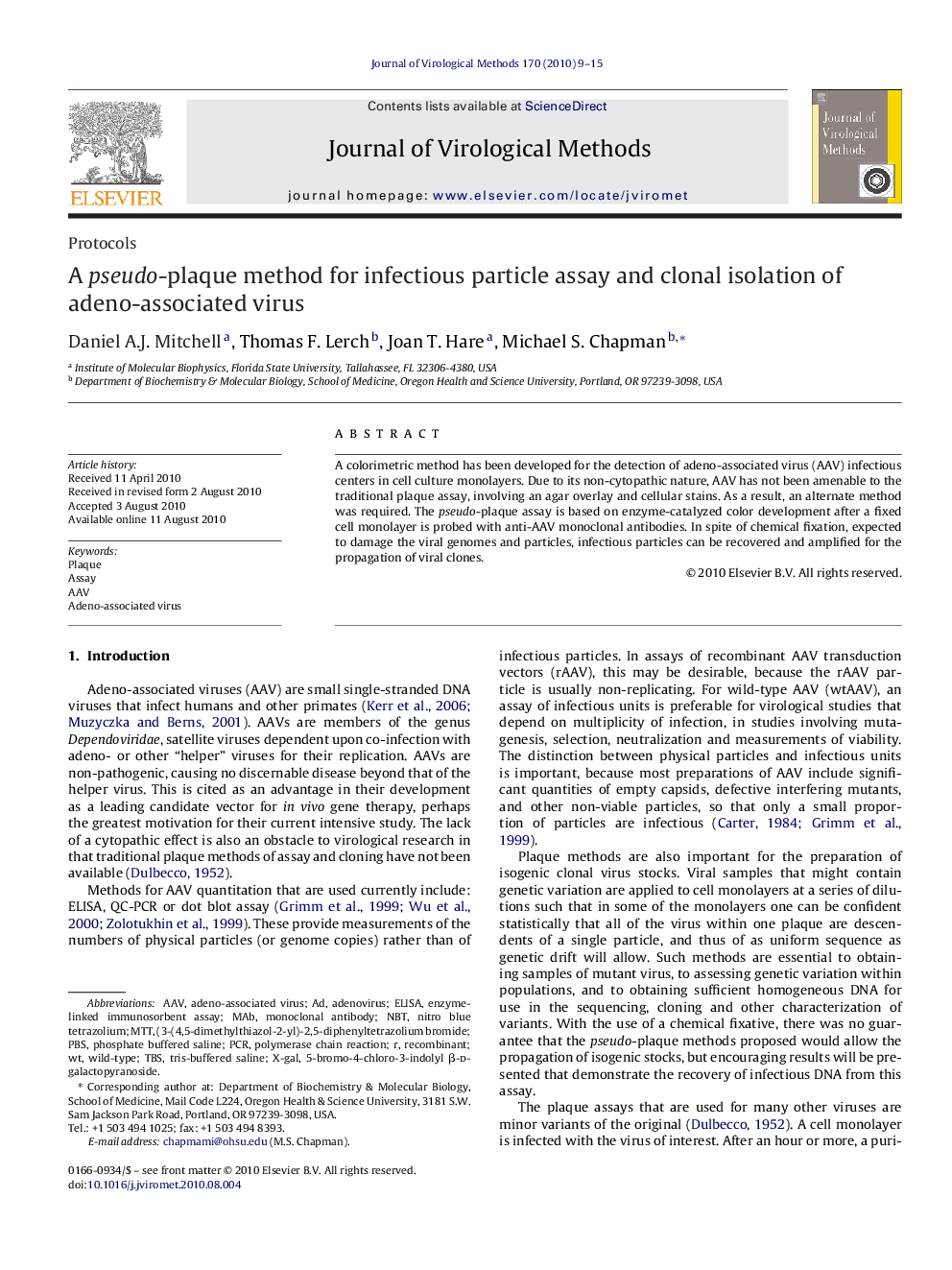| Article ID | Journal | Published Year | Pages | File Type |
|---|---|---|---|---|
| 6134996 | Journal of Virological Methods | 2010 | 7 Pages |
Abstract
A colorimetric method has been developed for the detection of adeno-associated virus (AAV) infectious centers in cell culture monolayers. Due to its non-cytopathic nature, AAV has not been amenable to the traditional plaque assay, involving an agar overlay and cellular stains. As a result, an alternate method was required. The pseudo-plaque assay is based on enzyme-catalyzed color development after a fixed cell monolayer is probed with anti-AAV monoclonal antibodies. In spite of chemical fixation, expected to damage the viral genomes and particles, infectious particles can be recovered and amplified for the propagation of viral clones.
Keywords
5-bromo-4-chloro-3-indolyl β-d-galactopyranosidePBSX-GalmAbAAVNBTTBS(3-(4,5-dimethylthiazol-2-yl)-2,5-diphenyltetrazolium bromideMTTAdenovirusMonoclonal antibodyRecombinantnitro blue tetrazoliumTris-buffered salineAssayEnzyme-linked immunosorbent assayELISAPhosphate buffered salinewild-typepolymerase chain reactionPCRAdeno-associated virusPlaque
Related Topics
Life Sciences
Immunology and Microbiology
Virology
Authors
Daniel A.J. Mitchell, Thomas F. Lerch, Joan T. Hare, Michael S. Chapman,
